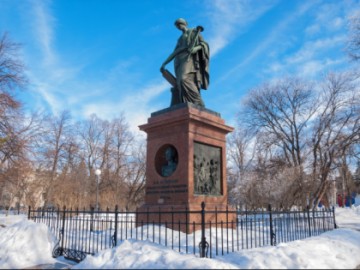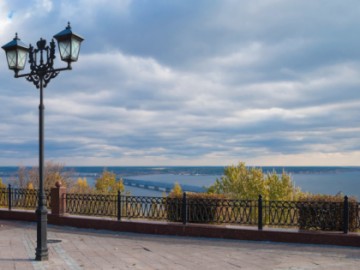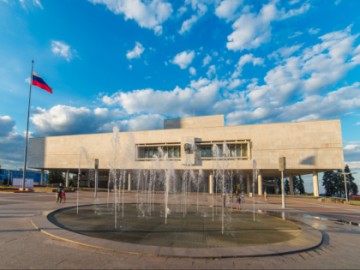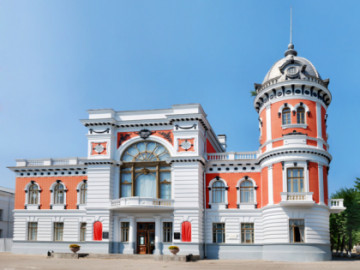Imperial Bridge with a Heavy Fate
The idea of the Imperial railway bridge across the Volga River belonged to the Russian reformer and statesman Pyotr Stolypin. He made a proposal of its construction in 1910 during his visit to Simbirsk. The construction of the bridge started three years later and was completed in 1916. The building materials included silver: a plate (60 x 35 cm) with the coat of arms of Russia, the city and a commemorative inscription was laid under the bridge pillar and covered with a marble plaque
The bridge was originally given the name of “His Imperial Majesty Nicholas II” and, being two kilometers long, it was considered the largest bridge in Europe at that time! In 1917 it was renamed the Liberty Bridge. According to eyewitnesses, the workers, having torn off the name-plate of the bridge, refused to hang a new one. They referred to the fact that the political situation in the country was constantly changing, and they did not want to change the plates every day. The old name was given back to the bridge in the post-Soviet era. The fate of the Imperial Bridge was heavy. Its construction was protracted because of two troubles - the fire and a landslide of the Simbirsk hill. During the Civil War, the White Guards blew up one of the spans of the bridge in order to delay the offensive of the Red Army men. In 1956 the bridge became also a motor-way bridge. Moreover, the motor road, unlike the railway branch, was made in a welded manner, which was a technical innovation for those times. In 1983, a passenger ship "Alexander Suvorov" rammed the bridge at the time a freight train was running over it. The best view of the bridge is offered by the Novy Venets Boulevard. In the evening, the bridge is illuminated.



































